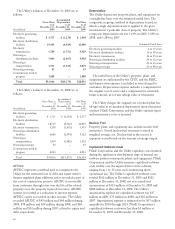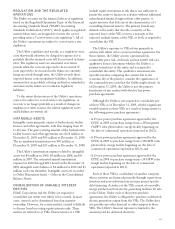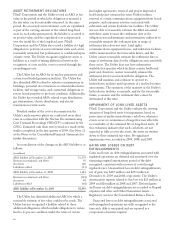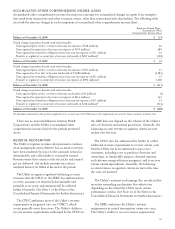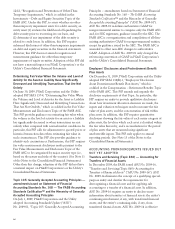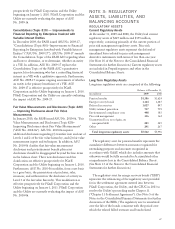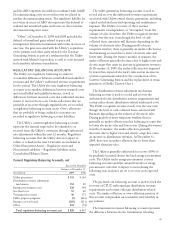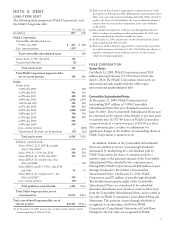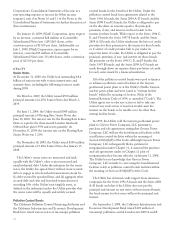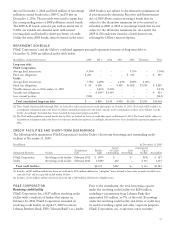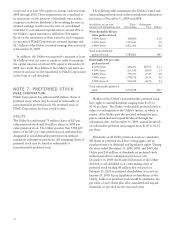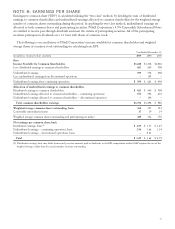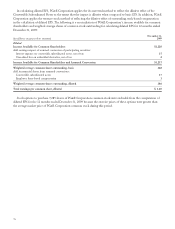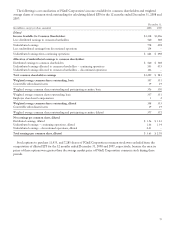PG&E 2009 Annual Report Download - page 74
Download and view the complete annual report
Please find page 74 of the 2009 PG&E annual report below. You can navigate through the pages in the report by either clicking on the pages listed below, or by using the keyword search tool below to find specific information within the annual report.revenues received by the Utility from the California
Independent System Operator (“CAISO”) (on behalf of
electric transmission wholesale customers) and refunds to
customers plus interest.
The public purpose programs balancing accounts
primarily track the recovery of the authorized public
purpose program revenue requirement and the actual cost
of such programs. The public purpose programs primarily
consist of the energy efficiency programs; low-income
energy efficiency programs; research, development, and
demonstration programs; and renewable energy programs.
A refund of $230 million from the California Energy
Commission for unspent renewable program funding
received during 2008 was returned to customers through
lower rates throughout 2009.
The ERBs balancing account records certain benefits
and costs associated with ERBs that are provided to, or
received from, customers. In addition, this account ensures
that customers receive the benefits of the net amount of
energy supplier refunds, claim offsets, and other credits
received by the Utility after the second series of ERBs were
issued.
At December 31, 2009 and 2008, “Other” included the
California Alternate Rates for Energy balancing account,
which records the revenue shortfall associated with the
low-income customer assistance program. Participation in
the program is generally impacted by economic conditions.
Program spending increases as more customers participate
in the programs, resulting in an under-collection. “Other”
also included incentive awards earned by the Utility for
implementing customer energy efficiency programs.
70


